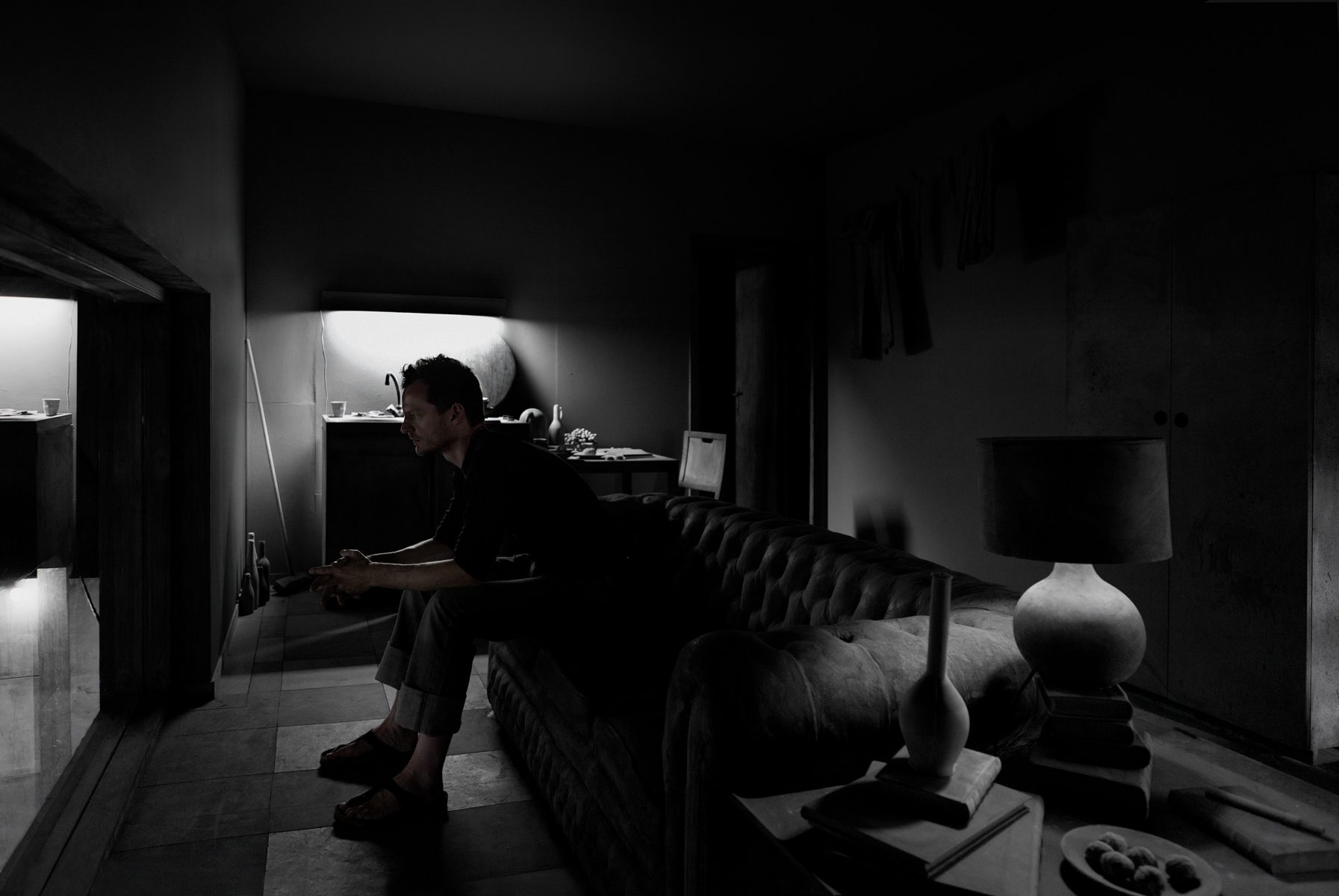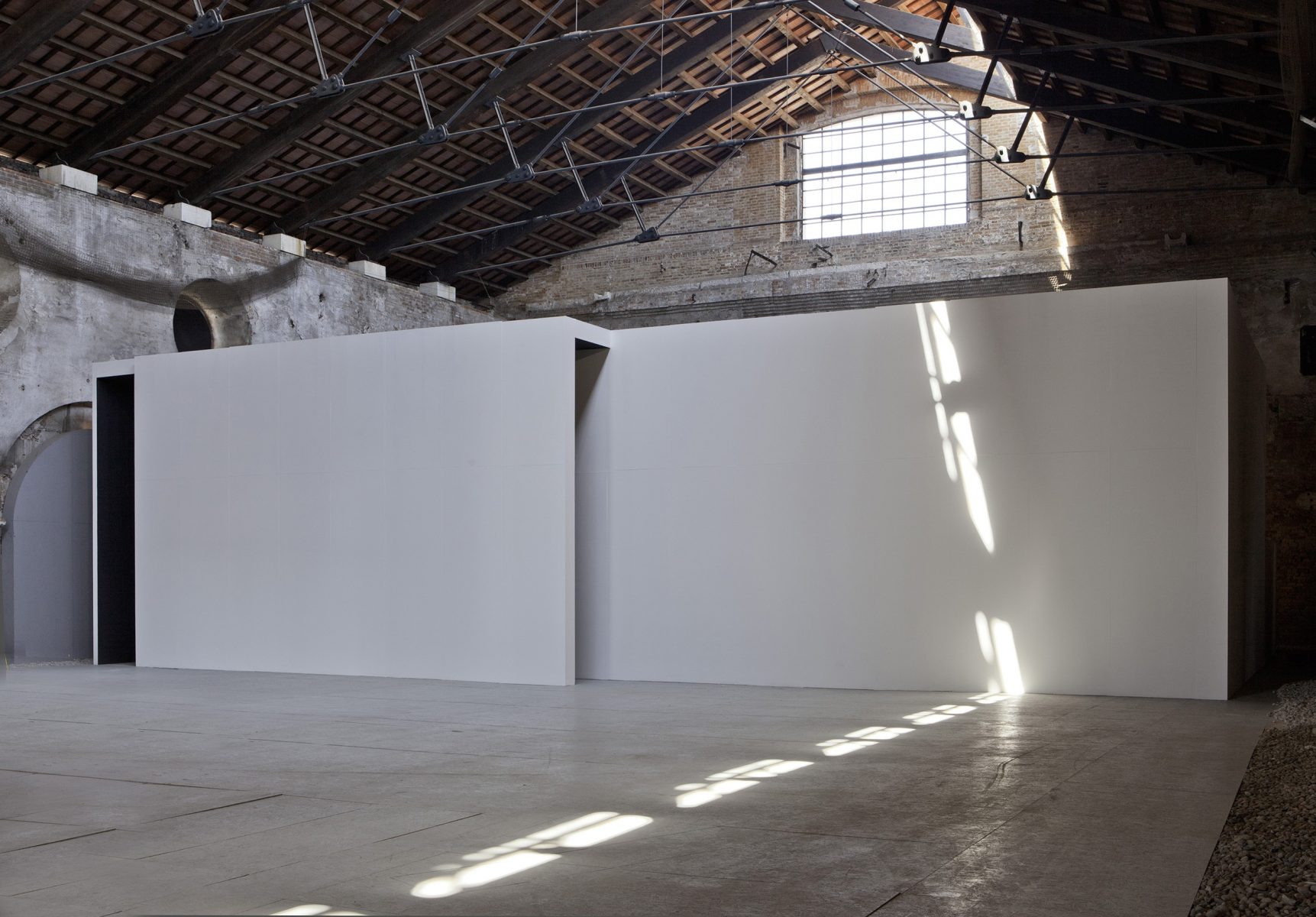Location (7) Sculptural Installation, 2011. 1800 × 500 × 850 cm. Mixed media, sound, light
Images
'Location (7)' is the seventh in an on-going series of large-scale, experience-based, sculptural installations. A staircase leads the viewer into a life-size, monochrome grey, silent evocation of a small abandoned apartment; a room where the abandoned furniture and objects unveil possible stories about an alleged former occupant. The artist executed the entire interior in a sculptural way, creating a silent environment that reminds one of the petrified remains of Pompeii. The collection of objects refers to the tradition of the still-life genre, the vanitas and the memento mori. From this room, the viewer can look through a window onto a sculptural interpretation of a small city garden by night, bordered by concrete slabs. In the front part, there are some abandoned tables with empty plates, glasses, bottles, garbage bags and a barbecue, obvious items and remains left after a garden party. At the back of the garden, there is an oversized circular pond with water lilies and an illuminated fountain. The garden is decorated with garlands of lights and pennants, and appears here as a small, domesticated paradise, clumsily staged by human hands. A soundtrack of ambient sounds enters the interior from outside through the partially open window. Inside, a musical composition can be heard. Both recordings, especially created for this piece, refer to the cinematic image and enhance the overall experience of the viewer. 'Location (7)' is the first installation in the 'Location' series in which the artist uses a private space as a subject; the other installations in the series evoke public spaces. Both the interior of the apartment and the adjacent urban garden refer to how we live our lives, how we shape our own habitat as well as the immediate scenery around us. It is our most personal environment, which is something to be taken seriously, but which also, from a broader perspective, is quite ridiculous, temporary and interchangeable, like the cardboard scenery of a movie or a theatre play. Using language, we condense all our experiences into a story to create a clear order; in a similar way, we stage our private surroundings to guide our daily rituals and express and shape our identities. The artist shows us a private living space and garden at the time when they have just been abandoned and are starting to decay; nature and chaos slowly begin to affect the setting. What was once the organised scenery of a personal story now starts to slowly disintegrate into an abandoned decor. The musical score for the work was especially composed by Serge Lacroix.















